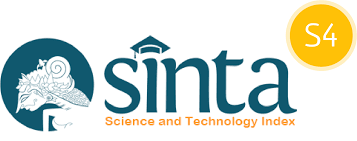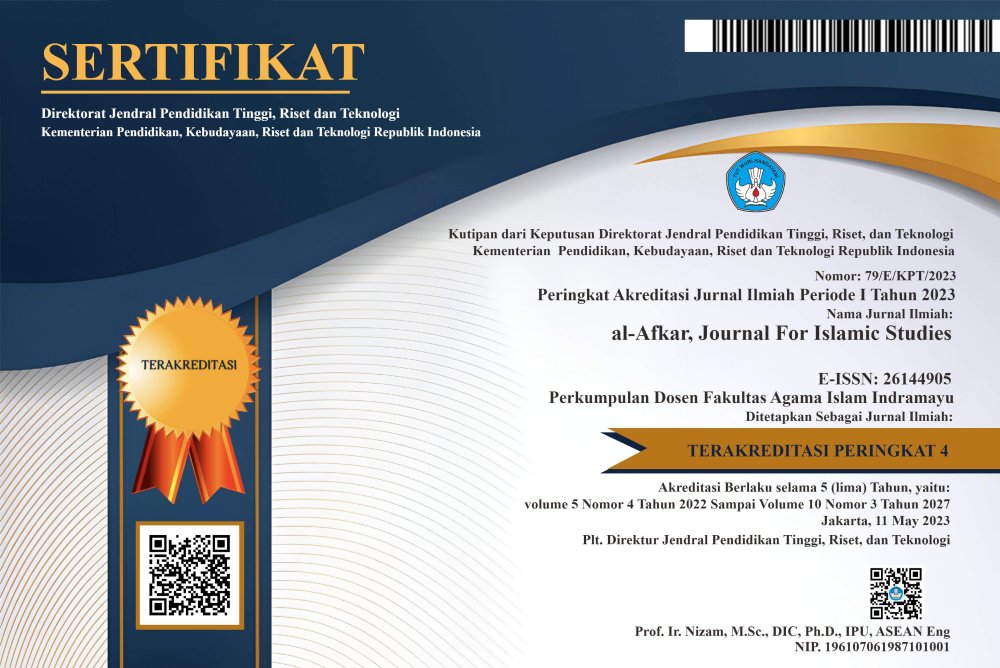Socio-Economic Impact on the Sinamot Tradition from an Islamic Law Perspective (Analysis Study of Batak Tribe Customs in Padang Gelugur District, Pasaman Regency)
DOI:
https://doi.org/10.31943/afkarjournal.v8i2.1441Keywords:
Marriage, Sinamot, Socioeconomic ImpactAbstract
Marriage is a fundamental social institution for humans, and almost all religious and cultural teachings regulate its implementation carefully. In Islam, marriage is not only seen from an essential perspective, namely to fulfill God's commands, but also from an ethical perspective, namely to respect and protect women's rights. One of the important elements in an Islamic wedding is the dowry, which serves as a sign of sincerity and respect for the bride. However, apart from religious teachings, cultural values and customs also play a significant role in people's lives. For example, in Padang Gelugur sub-district there is a "sinamot" tradition which is similar to the concept of dowry in Islam. This sinamot money is given before the wedding and is intended as a form of respect for the bride. Even though the purpose is similar to dowry, it is different from dowry. From the perspective of Islamic law, it is important to assess whether the sinamot money tradition is in line with the principles set out in Islam. Essentially, both dowry and sinamot money function to show seriousness and commitment to the marriage, as well as to respect and provide guarantees to the bride. In this research the author focuses on two things, namely how sinamot money is practiced and how sinamot money is reviewed in Islamic law. In the research the author used a qualitative method which helped the author analyze people's customary behavior, using a juridical sociological approach. In the research, the author found that the terms of sinamot money were determined by deliberation between the two parties, and in the analysis in Islamic law, it was in accordance with the theory, namely Maqasid Syari'ah.
Downloads
References
Abdul Aziz Muhmmad Azam. (2011). Fiqh Munakahat. Amzah.
Abdul Rahman. (1995). Perkawinan dalam Syariat Islam. Rineka Cipta.
Ahyar, K. (2000). Perwalian Anak Bil Ma’i Subhah; Kajian Terhadap Putusan. Encyclopedia of Volcanoes., 1995, 662. http://jurnal.umpar.ac.id/index.php/istiqra/article/view/487/398
Ali Muhammad Daud. (2000). Hukum Islam:Pengantar Ilmu Hukum dan Tata Hukum Islam di Indonesia. Pt. Raja Grafindo.
Asapri Jaya Bakri. (1996). Konsep Maqashid Syari’ah Menurut Al-Syatibi. Raja Grafinda Persada.
B. Ter Haar. (1962). Adat Law In Indonesia. Bathara.
B.A Simanjuntak. (1986). Pemikiran Batak. Uniersitas HKBP Nomensen.
Beni Ahmad Saebeni. (2001). Fiqh Munakahat 1. Pustaka Setia.
Dewes Agutina Dkk. (2003). Pergeseran Makna Dan Fungsi Sinamot Pada Upacara Pernikahan Etnik Batak. 16 no 2, 366.
Dini, A. Y. R., & Nurhelita, V. F. (2020). Hubungan Pengetahuan Remaja Putri Tentang Pendewasaan Usia Perkawinan Terhadap Risiko Pernikahan. Jurnal Kesehatan, 11(1), 50–59. https://jurnal.stikescirebon.ac.id/index.php/kesehatan/article/view/197/126
Elvis Fresly Purba & Lastri. (2021). Pengaruh Upa Tulang, Jumlah Ulos, Pekerjaan Dan Pendidikan Terhadap Sinamot: Kasus Perkawinan Batak Toba Di Medan. 21 no 2, 308.
Hadikusuma, H. (2003). Hukum Perkawinan Indonesia Menurut Perundangan Hukum Adat, Hukum Agama. Mandar Maju.
Haitomi, F. (2022). Rekonstruksi Aksin Wijaya atas Interpretasi Qs. an-Nisa’ [4]: 1 Sebuah Kritik atas Penafsiran Tekstualis Normatif dan Kontekstualis Progresif. Mumtaz: Jurnal Studi Al-Quran Dan Keislaman, 5(02), 167–180. https://doi.org/10.36671/mumtaz.v5i02.186
Hasbi Umar. (2007). Nalar Fiqih Kontemporer. Persada Press.
Imam Sudiyat. (2007). Hukum Adat Sketsa Asas. Liberty Yogyakarta.
Irdawati Saputri. (2018). Mahar Perspektif Alquran dan Implementasinya Pada Masyarakat. Ushuluddin Adab Dan Dakwah, 1 no 1, 56.
J. C Vergouwen. (2004). Masyarakat dan hukum adat Batak Toba. Lkis Pelangi.
Jaene N Saly Dkk. (2023). Pelaksanaan Tradisi Sinamot Perkawinan Adat Batak Toba Perspektif Undang-Undang Perkawinan Tahun 1974. Social Sciene Reserch, 3 no 5, 4.
Jamaluddin. (2001). Atiyyah, Nahwa Taf’il Maqashid Syari’ah. Dar Al Fikr.
Jonar Situmorang. (2001). Asal usul, silsilah dan tradisi budaya batak. Cahaya Harapan.
Kamal Muktar. (1994). Asas-Asas Hukum Islam tentang Perkawinan,. Bulan Bintang.
M. Hasbi Ash-Shiddieqy. (1975). Filsafat Hukum Islam. Bulan Bintang.
Manik, H. S. (2012). Makna dan Fungsi Tradisi Sinamot dalam Adat PerkawinanSukubangsa Batak Toba di Perantauan Surabaya. Jurnal Bio Kultur, 1(1), 19–22. chrome-extension://efaidnbmnnnibpcajpcglclefindmkaj/https://journal.unair.ac.id/filerPDF/02 Helga----TRADISI SINAMOT DALAM ADAT PERKAWINAN SUKU BATAK TOBA DI PERANTAUAN Rev.pdf
Masyitoh, D. (2023). Tinjauan Hukum Islam Terhadap Tradisi Pingitan Dalam Perkawinan Adat Jawa. Jurnal Ilmu Hukum Dan Tata Negara, 1(3). https://journal-stiayappimakassar.ac.id/index.php/Birokrasi/article/view/562/576
Mhd Yazid. (2020). Relasi Suami Istri Dan Pelanggengan Patriarki (Nikah Misyar Dalam Perspektif Gender). Ijtihad, UIN Imam Bonjol Padang, 36(1), 105–118. https://journals.fasya.uinib.org/index.php/ijtihad/article/view/11/8
Muahammada Baghir Alhabsyi. (2002). Fiqih Praktis. Mizan.
Nasution, M. S. A. (2015). Muhammad Syukri Albani Nasution, ‘Analisis Kompilasi Hukum Islam Tentang Tipologi Pelaksanaan Hukum Keluarga Islam di Mandailing Natal. IX no 1(Jurnal al-Manahij), 34.
Pandapotan Nasution. (2005). Adat Budaya Mandailing Dalam Tantangan Zaman. Forkala.
Puniman, A. (2018). Hukum Perkawinan Menurut Hukum Islam Dan Undang-Undang No. 1 Tahun 1974. Jurnal Yustitia, 3(1), 257–260. http://ejournal.unira.ac.id/index.php/yustitia/article/view/408/341
Ramulyo Mohd Idris. (2002). Hukum Perkawinan Islam. Pt. Bumi Aksara.
Richard Sinaga. (2006). Adat Budaya Dalihan Na Tolu di Mata Al Kitab dan Teologi Dalihan Na Tolu Dalam Jan S Aritonang (Ed), Beberapa Pemikiran Menuju Teologi Dalihan Na Tolu. Dian Utama.
Rumasta Simalongo. (2011). Fungsi Uang Jujur (Sinamot) Pada Perkawinan Menurut Adat Masyarakat Batak Toba Di Desa Sabungan Ni Huta Kecamatan Ronggur Ni Huta Kabupaten Samosir. JUPIIS, 3 no 3, 30.
Saleh Al-Faizan. (2006). Al Mulakhasul Fiqhi. Gema Insani.
Sari, F., & Sunarti, E. (2013). Kesiapan Menikah Pada Dewasa Muda Dan Pengaruhnya Terhadap Usia Menikah. 6(3), 143–153. https://journal.ipb.ac.id/index.php/jikk/article/view/9982/7804
Sayyid Sabiq. (1980). Fiqh Sunnah Terj. Mohammad Thalib. Al Ma’rif.
Shamad, M. Y. (2017). Hukum Pernikahan dalam Islam. Istiqra’, 5(1), 76. http://jurnal.umpar.ac.id/index.php/istiqra/article/view/487/398
Sirin, K. (2013). Analysis of a Text and Context Approach within the Formulation of Islamic Inheritance Distributions. Ahkam: Jurnal Ilmu Syariah, 13(2), 209–224. https://doi.org/10.15408/ajis.v13i2.941
Soemiyati. (1989). Hukum Pernikahan Islam dan Undang-Undang Pernikahan. Liberty Yogyakarta.
Subhan. (2017). Nalar Kesetaraan Mahar Dalam Perspektif Syariah Islam. Studi Keislaman, 4 no 1, 45.
Sundaro, H. (2022). Positivisme Dan Post Positivisme : Refleksi Atas Perkembangan Ilmu Pengetahuan Dan Perencanaan Kota Dalam Tinjauan Filsafat Ilmu Dan Metodologi Penelitian. Modul, 2877, 21–30. https://doi.org/https://doi.org/10.14710/mdl.22.1.2022.21-30
Syarifuddin, A. (2009). Hukum Perkawinan Islam di Indonesia. Kencana.
Tihami dan Sohari Sahrani. (2010). Fikih Munakahat. Raja Grafinda Persada.
Tsany, F. (2017). Trend Pernikahan Dini di Kalangan Remaja (Studi Kasus Di Kabupaten Gunung Kidul Yogyakarta Tahun 2009-2012). Jurnal Sosiologi Agama, 9(1), 83. https://doi.org/10.14421/jsa.2015.091-05
Wahbah Al Zuhaili. (1997). Nadhoriyat al-Dhoruroh al-Syariyah. Darul Fikri Al muasir.
Downloads
Published
How to Cite
Issue
Section
License
Copyright (c) 2025 Nurul Hasanah

This work is licensed under a Creative Commons Attribution 4.0 International License.



















